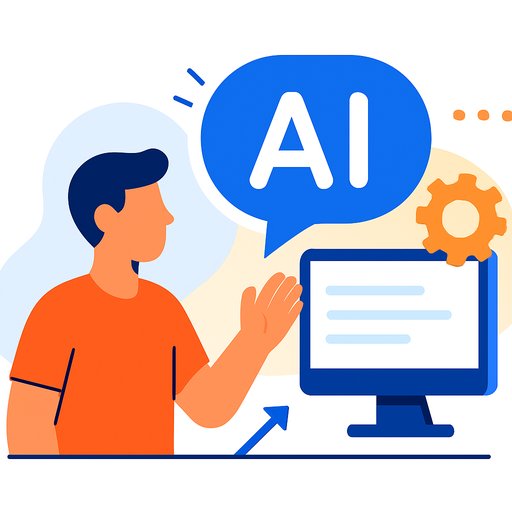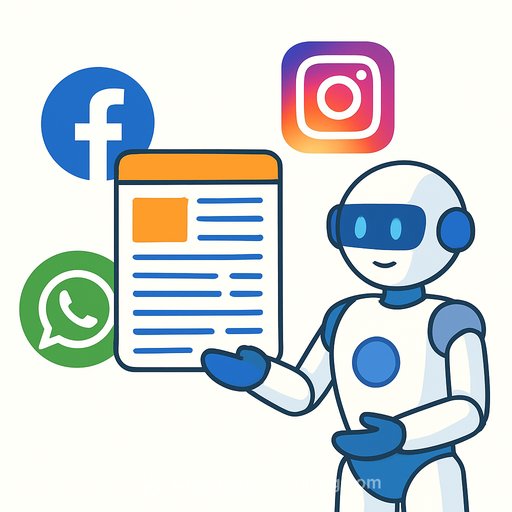This is the second part in our AI Insights for PR Professionals and Communicators series, following up on the article on AI content strategy.
Making Your Content Visible in the Age of AI Search
Search has changed. With AI-powered engines and LLMs like ChatGPT, Copilot, Perplexity, Google Gemini and DeepSeek, visibility now means your content ranks, gets surfaced in AI answers, and gets cited as a trusted source.
That's the promise of Generative Engine Optimization (GEO). It's SEO for AI: create content that humans trust and machines can parse. Miss either piece and your message gets buried.
Why GEO Matters in 2025
LLMs quote, summarize, and stitch sources to answer questions. If your content is clear, credible, and well-structured, it's easier for AI to use-and easier for journalists and stakeholders to trust.
For PR teams, this is an attention strategy. Earn citations from humans and machines by being the most useful, quotable source in your niche.
How to Create Content Optimized for Both AI and Humans
1) Write for humans first, then optimize for AI
AI models are trained on human writing. They favor clarity, coherence, and credibility-the same things your audience values. Use a conversational tone that matches your brand. Explain jargon only if it adds precision.
- Start with a sharp point of view: what you believe and why it matters.
- Use examples, short stories, and quotes from subject-matter experts.
- Target credibility: content that earns attention from journalists and pros is more likely to be cited by AI.
2) Structure for clarity and machine readability
Structure guides both readers and crawlers. AI relies on semantic cues to extract answers, so make the signal obvious.
- Use clear heading hierarchies (H1 > H2 > H3) with descriptive phrasing.
- Lead each section with a concise answer in 40-60 words.
- Break up text with bullet points and short paragraphs for quick scanning.
- Include FAQ sections and question-based subheads to match search intent.
3) Answer real questions with real expertise
LLMs are built to answer queries. If you solve the exact question your audience asks, you increase your odds of being surfaced and cited.
- Map long-tail, natural-language questions your audience uses.
- Write "answer-first" sections, then expand with context and examples.
- Back up claims with data, citations, dates, and sources.
- Explain the "so what" for PR: media value, messaging clarity, and stakeholder impact.
4) Build trust through transparency and authority
Trust is a ranking factor for both humans and AI. Make credibility obvious and verifiable.
- Use bylines with author bios and links to professional profiles.
- Cite reputable sources and clearly date content and updates.
- Keep your site secure (HTTPS), fast, and mobile-friendly.
- Publish original research, reports, and thought leadership that others can cite.
- Use E-E-A-T principles: Experience, Expertise, Authoritativeness, Trustworthiness. See Google's guidelines here.
5) Use content hubs to prove topical authority
Single posts fade. Hubs signal depth. Build interconnected content around your core topics so readers and AI see you as the go-to source.
- Create a hub with: Comparisons, Case Studies, FAQs, Thought Leadership, and Interviews.
- Link related pieces together and keep them updated with new data and examples.
- Summarize key takeaways at the hub level to boost "snippability."
6) Distribute where AI and humans find content
AI ingests sources your audience already uses. Be present, consistent, and quotable across channels.
- Online news media: earn coverage by distributing press releases on trusted sites.
- Company website: publish full versions, source lists, and media-friendly assets.
- Social: share insights on LinkedIn and X to spark commentary and citations.
- Communities: contribute thoughtful answers on forums like Reddit and industry groups.
- Repurpose content across formats to reinforce key messages and expand reach.
Simple Workflow for PR Teams
- Brief: pick one audience problem and one clear point of view.
- Draft: write answer-first sections with data and examples.
- Structure: apply headings, bullets, FAQs, and question-based subheads.
- Trust: add bylines, dates, sources, and expert quotes.
- Publish: optimize page speed and mobile UX.
- Distribute: press release, newsroom post, LinkedIn/X thread, community post.
- Refresh: update stats, add new examples, and link fresh pieces into the hub.
Conclusion: The Human-AI Content Equation
The best content serves people first and makes life easy for machines. It informs, engages, and builds trust. It answers real questions with clear, cited expertise-and it's structured so AI can find and quote it.
AI Optimized Content FAQ
How do you optimize content for AI?
- Write for humans first; then refine for machine readability.
- Use semantic headings and bullet points for clean parsing.
- Include question-based subheads that mirror user queries.
- Put concise answers early in each section for better "snippability."
- Apply E-E-A-T: Experience, Expertise, Authoritativeness, Trustworthiness.
- Demonstrate topical authority with content hubs and comprehensive coverage.
- Distribute across multiple platforms to increase AI ingestion and human reach.
What content do both AI and humans like?
- Conversational tone: professional, clear, and accessible.
- Real-world relevance: practical problems, practical solutions.
- Expert insights: original research, studies, and thought leadership.
- Clarity and coherence: minimal jargon, zero fluff.
- Storytelling and examples: make complex ideas easy to understand.
Further Learning
If you want hands-on practice building GEO-ready content systems for PR and marketing roles, explore curated programs here.
Sources
Media OutReach Newswire research; ChatGPT; Microsoft Copilot; Perplexity; Google Gemini; DeepSeek.
Your membership also unlocks:










